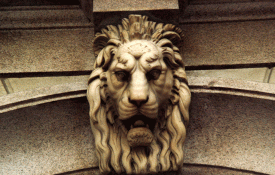Art and culture go hand in hand. Culture and marketing are symbiotic. But art and advertising? That’s a combination still under hot debate—even within the advertising industry. Ask agency employees if advertising is art, and you’ll probably get a variety of opinions.
The sales and executive teams will likely say, “Hell, no. An ad is a sales tool. It’s culturally significant as it provides insight into the ways we communicate in particular point in time, but it’s not art. An ad’s highest priority is to win the audience on behalf of a person, product or service.”
[To read more of Michael Schaffer’s thought leadership click here]
Ask the production department, and you may get a different answer. After all, what draws an individual to a job where artistic ability, inventiveness, cultural awareness and dedication are valued, rewarded, and well compensated? What spurs an individual to work tirelessly within a set of strict parameters and guidelines in order to attempt over and over again to produce work that fulfills all of its business obligations while also being of the best possible quality for its circumstances?
What, if not the compulsion to create. As an ad agency owner/executive with a background in both sales and creative, I can attest to the artistic skill of the designers, photographers, videographers, and writers with whom I’ve worked, and I can also attest to their dedication, and that constant, internal push to produce evocative, expressive, beautiful advertising within the parameters of the medium and the job.
Sounds a lot like art to me.
“Yes, yes, yes,” you might say, “but at the end of the day, they are selling stuff! That’s not art!”
And you would have a point. Art for art’s sake is arguably the purest form of expression. But artists for hire are as old as civilization itself. Michelangelo, Botticelli, and Shakespeare are probably some of the best known, but they represent a much wider and deeper pool. Some of the greatest works of art were created through patronages, on behalf of the wealthy, to preserve their immortal memory, display their wealth, power, and influence the masses. From the ancient Egyptian Bust of Nefertiti to the Equestrian Statue of Marcus Aurelius in Rome to the Sistine Chapel at the Vatican, not to mention the countless flattering portraits of the royal, rich, and powerful, art has always been about persuasion and has always been the ultimate marketing tool. And while it’s true, the old masters might not have been selling potato chips and gluten-free makeup, they were selling something. They were paid to use their artistic skill to persuade the masses to make a serious purchase.
To say that a fully executed creative work is not art because its goal is to sell something—be it an idea, a religion, or a product—discounts the majority of what sits in the world’s most beloved museums. When we look back through the lens of history at these modern times, will we make that distinction? Or will the cream rise to the top regardless of who paid for it and why?
I was in a bookstore recently, nosing around the art section, and tucked in beside a biography of Michelangelo was a book on the work of Robert McGinnis. McGinnis is an artist and illustrator famous for his book cover illustrations and movie posters—most notably his work on the James Bond series in the 1960s and ’70s. His work is highly regarded and avidly collected. And while much of it was commissioned and created for the purpose of selling a product (in this case movies and paperbacks), if you want to find a book about him don’t go looking for it in the marketing aisle.
Artists want to create art for art’s sake, but they also need to eat, and that is a simple—but hugely important—fact. The days of wealthy patronage are largely over, and fine art grants are few and far between. Where are young artists to go if they want to practice art and also be able to afford shelter? These days, corporations and businesses are among those opening up their pocketbooks, hiring the agencies that in turn hire the throngs of art school graduates. And yes, these businesses have an agenda, but any competent artist knows how to work within the parameters of his media, and advertising creatives are no different.
[For more on Michael Schaffer’s approach to Advertising click here]
Dedicated advertising creatives understand their purpose and embrace the challenge of using their artistic abilities to create effective sales tools. It is my contention that a good advertising agency will recognize the artist within the designer, photographer or writer, and encourage the development of creative expression within the parameters of the job. True advertising and marketing creatives know that they are not creating art for art’s sake and they know that final approval has far less to do with artistic merit than persuasive quality. But the good ones, I have found, approach every job with the goal of making it the best it can possibly be—creatively and persuasively.
Modern advertising as art? In the end, history will be the judge. In the meantime, here at Echo Factory, we’re sticking to the opinion that at the very least, fostering artistic expression in our creatives makes for effective, quality ads. It’s what we’ve always done and it’s worked well for us so far.














































